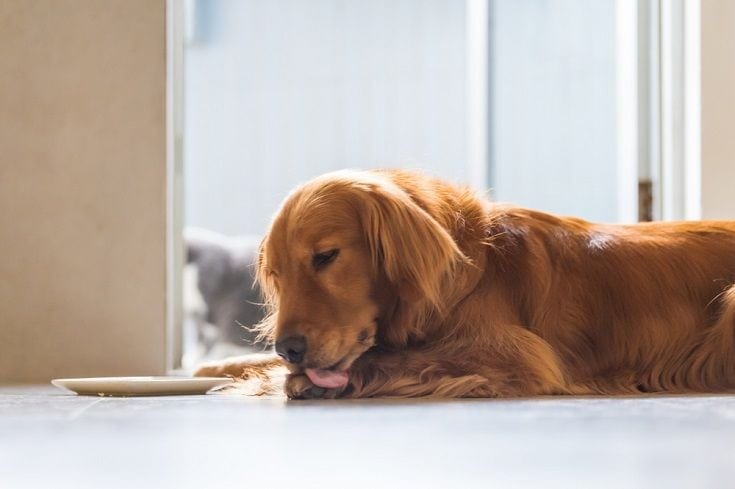Can Dogs Detect Carbon Monoxide? Signs of CO Poisoning
By Beth Crane
Updated on
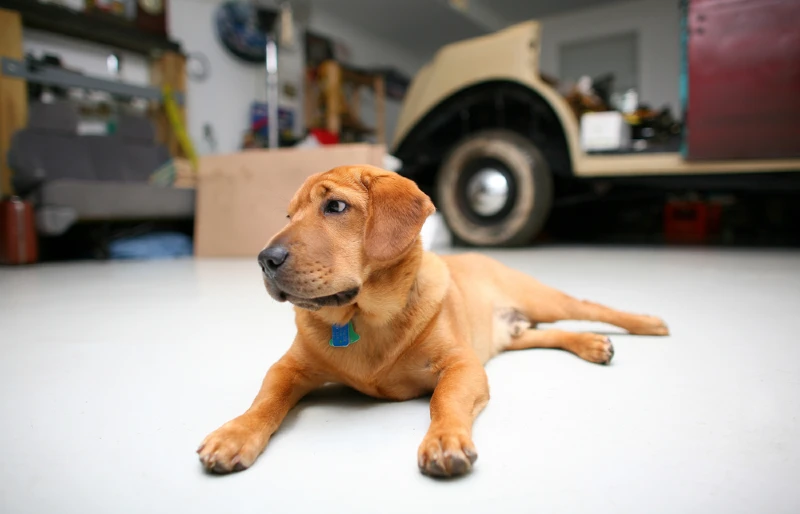
You may have heard stories about dogs saving their owners from disastrous situations. Fires, burglars, and attacks by other animals are all regularly reported, but what about carbon monoxide? Can dogs even detect it? Like humans, dogs can’t detect carbon monoxide (CO). Although they cannot detect the gas, they can alert their owners when a CO alarm goes off.
What Is Carbon Monoxide?
Carbon monoxide is a colorless, tasteless, odorless, non-irritating gas released when fuel is improperly burned. Fuels being improperly burned can be the result of incorrect oxygen levels being present, basically meaning that any combustion in a home, garage, or other enclosed space can potentially cause the production of CO.1
- Cars being run in enclosed garages
- Malfunctioning water heaters
- Malfunctioning gas burners
- Fires
Carbon monoxide is toxic, and CO poisoning causes the deaths of around 430 people a year in the US.2 Unfortunately, dogs can’t detect CO due to its properties, and neither can humans. The only signs that CO is present in the environment or home are the onset of its effects, which is why carbon monoxide detectors are so important.
How Can Dogs Alert Humans to the Presence of Carbon Monoxide?
Because dogs can’t detect carbon monoxide themselves, they can only alert humans to its presence if they hear the CO alarm and react or if they suffer the effects of CO poisoning. Some dogs will respond and get their owner’s attention if a carbon monoxide alarm begins to blare, particularly if owners are asleep.
Unfortunately, others will start to succumb to the effects of carbon monoxide themselves; since dogs are smaller than humans, they often show signs of CO poisoning more quickly than humans. Their owners can notice their behavior and realize that something is wrong, evacuating the home (with their dog) to safety. This isn’t something dogs voluntarily do, but they can alert people to CO before the effects become apparent. This is why it’s essential to recognize the effects of CO toxicity in humans and dogs.
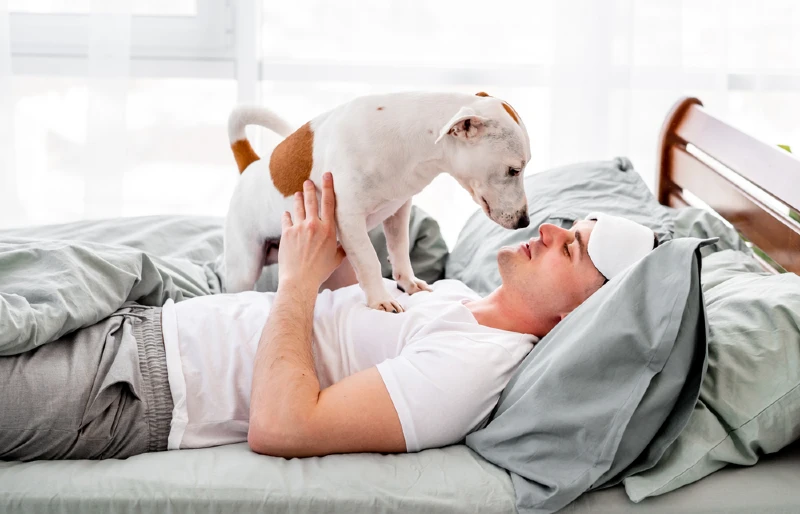
What Are the Signs of Carbon Monoxide Poisoning in Dogs?
The signs of carbon monoxide poisoning in dogs are similar to those seen in humans. The signs can come on slowly (often seen in slow CO leaks) or rapidly, depending on the concentration of CO in the environment. The most common signs of carbon monoxide poisoning in dogs include:
- Lethargy/sleepiness
- Weakness
- Ataxia (wobbling gait)
- Breathing difficulty
- Depression
- Uncoordinated movements or staggering
- Bright red mucous membranes
- Seizures
- Coma
The signs depend on how long a dog is exposed to CO and the amount they are exposed to. For example, the following signs have been seen in dogs with chronic, low-level CO poisoning:
- Coughing
- Nausea
- Vomiting
- Cold or flu-like signs
- Loss of stamina when exercising
- Uncoordinated/wobbling gait
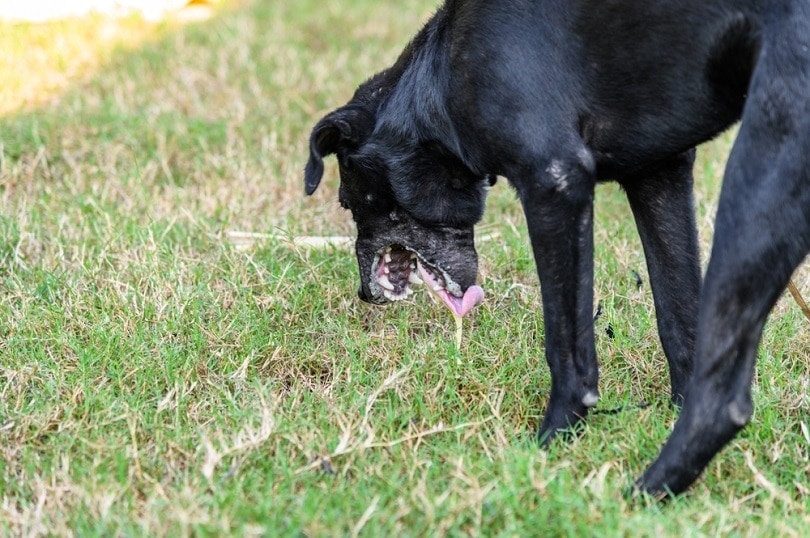
There may be signs of CO toxicity in dogs that are present, which we can’t see. For example, it has been reported that humans can lose periods of time or become forgetful and even feel like they’re hallucinating because of chronic carbon monoxide toxicity, but this can be very hard to measure in dogs.
If you are indoors and notice signs of carbon monoxide poisoning in yourself, someone else, or your dog, get out of the house with all members of your household immediately and call the local authorities.
Why Does Carbon Monoxide Cause Problems in Dogs?
Carbon monoxide acts in canine bodies the same as in humans. Carbon monoxide replaces oxygen molecules in red blood cells, creating carboxyhemoglobin and causing hypoxia. Hypoxia is the lack of oxygen in the body, starving the brain, heart, and other organs of oxygen and causing them to fail.
Because oxygen starvation affects the brain and nervous system, some dogs exposed to carbon monoxide have long-term effects that can significantly reduce their quality of life.
What Should I Do if I Think My Dog Has Been Exposed to Carbon Monoxide?
If you think your dog could have been exposed to carbon monoxide, you should first remove your dog from the source. This could be getting them out of the garage or out of the house; the important thing is that they need fresh air right away to begin clearing the CO from their bodies.
Next, your dog should be taken to their veterinarian or an emergency out-of-hours vet if signs of CO poisoning appear at night. Time is a factor in getting your dog better, as carbon monoxide takes time to clear from the body and can continue to cause damage if not quickly treated. Make sure you’re not in danger when doing this, and call the emergency services if you’re concerned about CO in your house.
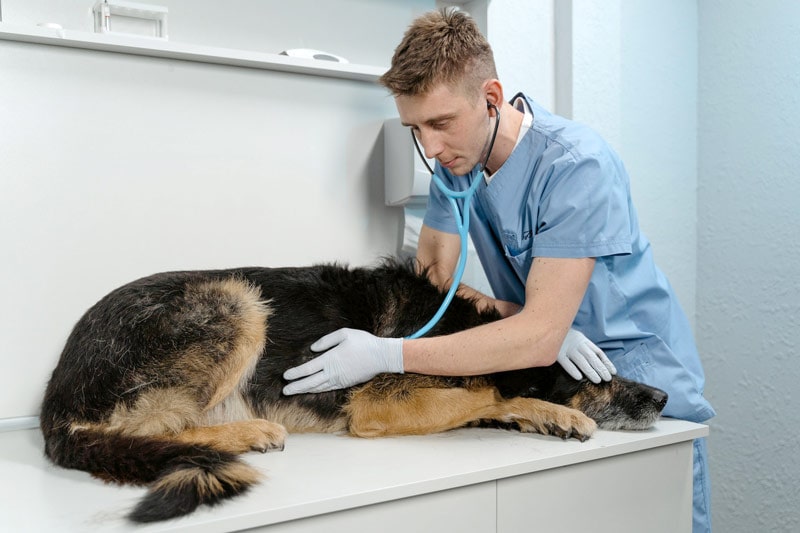
What Is the Treatment for Carbon Monoxide Poisoning?
Carbon monoxide poisoning is usually treated first by administering pure oxygen. This helps to clear the CO from a dog’s body and re-perfuses the organs and nervous system with oxygen-rich blood. While oxygen is being administered, your dog’s vet will likely take blood to assess other areas of your dog’s body for damage and see how much CO your dog has inhaled.
The vet can then give your dog fluids to combat potential dehydration or imbalances while increasing blood perfusion. After your dog’s oxygen levels are normalized, and they’re given the clear to go home, they will need special care to help them recover.
How Do I Look After My Dog After Carbon Monoxide Exposure?
Owners will need to continue their dog’s recovery at home. Some dogs recover quickly from carbon monoxide poisoning, while others suffer long-lasting effects. Your dog will need to be taken on slower, shorter walks in the weeks following CO poisoning, as they will struggle with more intense exercise. Physical activity should be monitored and limited for up to 6 weeks post-exposure, and shorter walks and play sessions can help your dog’s body recover.
Some effects that carbon monoxide can have on the nervous system aren’t immediately apparent and can take weeks to occur. Lots of love, affection, and comfort should be given to your dog at this time, as it’s likely a scary and uncomfortable thing for them to endure. Keep a close eye on any dog exposed to CO, and get them veterinary treatment should any troubling signs re-occur.
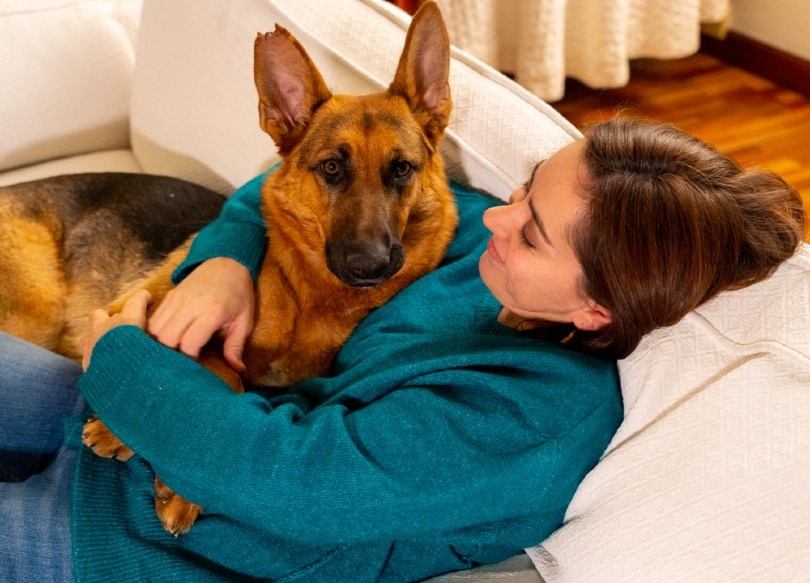
Can Any Animal Detect Carbon Monoxide?
Because of its properties, carbon monoxide isn’t detectable by any animals. However, some animals have been used historically for this purpose. As recently as 1986, Canaries were still used in British mines to detect carbon monoxide, a tradition that goes back decades.
Canaries (and other birds or small mammals) were traditionally used to act as an early warning sign of CO in mines due to their smaller size, making any effects of CO toxicity apparent much sooner than they would occur in humans. These birds commonly survived this ordeal and were given oxygen to recover before being taken back into the mine.
Final Thoughts
Animals have historically helped people working in mines by alerting them to the presence of CO, and they were used more as an early detection system. Dogs cannot smell, taste, or see carbon monoxide despite having remarkable olfactory systems. Dogs can still alert us to CO in the air, but it is more passive and results from noticing the adverse signs it causes in dogs before it has noticeable effects on humans.
See also: Can Dogs Detect Electronics? Interesting Facts & FAQ
Featured Image Credit: Robert MacMillan, Shutterstock


